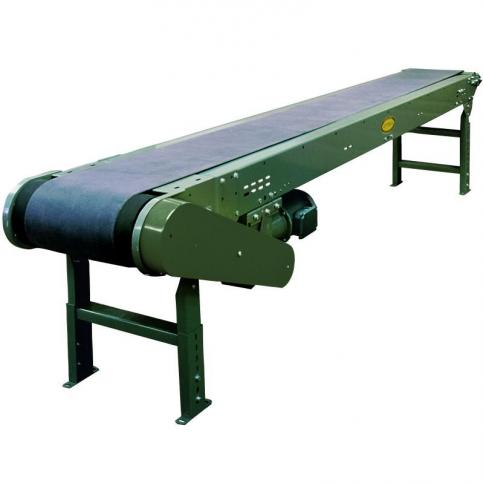Belt conveyors are essential for many types of manufacturing production lines. When working correctly, these conveyors are responsible for securing your products along the conveyor line and helping to transport them from one place to another. Like any piece of equipment or machinery accessory, belt conveyors can experience deterioration over time especially if not well maintained. Considering their importance in the overall operations of conveying systems, it is important to spot these problems early and get them fixed as soon as possible to prevent unnecessary downtime.
Here are some examples of common problems with belt conveyors:
1. Belt Tracking
Sometimes the belt will fail to align down the center of the conveyor, thus causing the belt to wander over to one side or the other. When this goes undetected the belt will rub along the side of the conveyor rail breaking down and fraying the belt. Eventually the belt or lacing may catch on the side rail causing extensive belt damage or perhaps tipping a motor overload due to the jam.
2. Belt Tension Problems
Belt conveyors need their belts to be at the exact right tension for their application. If too loose, the belt will slip under the load and the conveyor line will be halted. If it is too tight, it can overload the drive and cause the breaker to trip. This will all lead to unwanted downtime, derailing your production line. If not fixed correctly, over time, faulty belt tension will lead to damage of the bearings in the drive and end pulleys.
3. Blockages or Product Jams
This problem is somewhat related to the first one. Every now and then, your conveyor line may experience some kind of blockage. Packages can get caught on sharp edges, uneven surfaces, or corners. Sometimes, belts that are worn out can cause blockages. One of the main causes of product jams are unsmooth side guards. This is why it is pivotal for you to inspect your conveyor line thoroughly and regularly. What looks like a small problem now can lead to unexpected downtime if you let it worsen over time.
4. Spilling
Spillages are quite common, though this does not mean they are any less of an issue. Spillages tend to happen most along transfer or load points due to the more uneven surfaces. While a little bit of a spill may seem like a small issue, buildup of these liquids or materials over time on your conveyor line can cause problems later on, such as rust. An easy way to reduce spillages is to install accessories such as impact beds or belt ploughs.
Considering the high-impact problems that may arise due to lax maintenance, make sure you perform routine checks on your belt conveyors to make sure they are operating optimally. Here are some tips on what you can do on a daily basis:
- Always keep an ear out for abnormal or excessive noises
- When the conveyor is shut down and not operating, take the opportunity to look for and remove foreign material that may be obstructing the flow of the conveyor line
- Keep an eye out for any shavings or dust below the conveyor, as they indicate that there may be damaged components
- Look out for oil leaks around the reducer and roller axles
As you can see, much of the tips above come down to vigilant visual and audio inspection. With that said, in terms of keeping your belt conveyors in good shape for the long run, the best way to stay on top of things for your conveying system is to employ the services of a preventative maintenance team. At Norpak Handling, we provide a robust maintenance program that will see us provide not only thorough inspections periodically but maintenance services such as lubrication and cleaning so that you never have to worry about missing out on a maintenance appointment again. With our services, you can rest assured that your conveyor belts will be in good hands.










